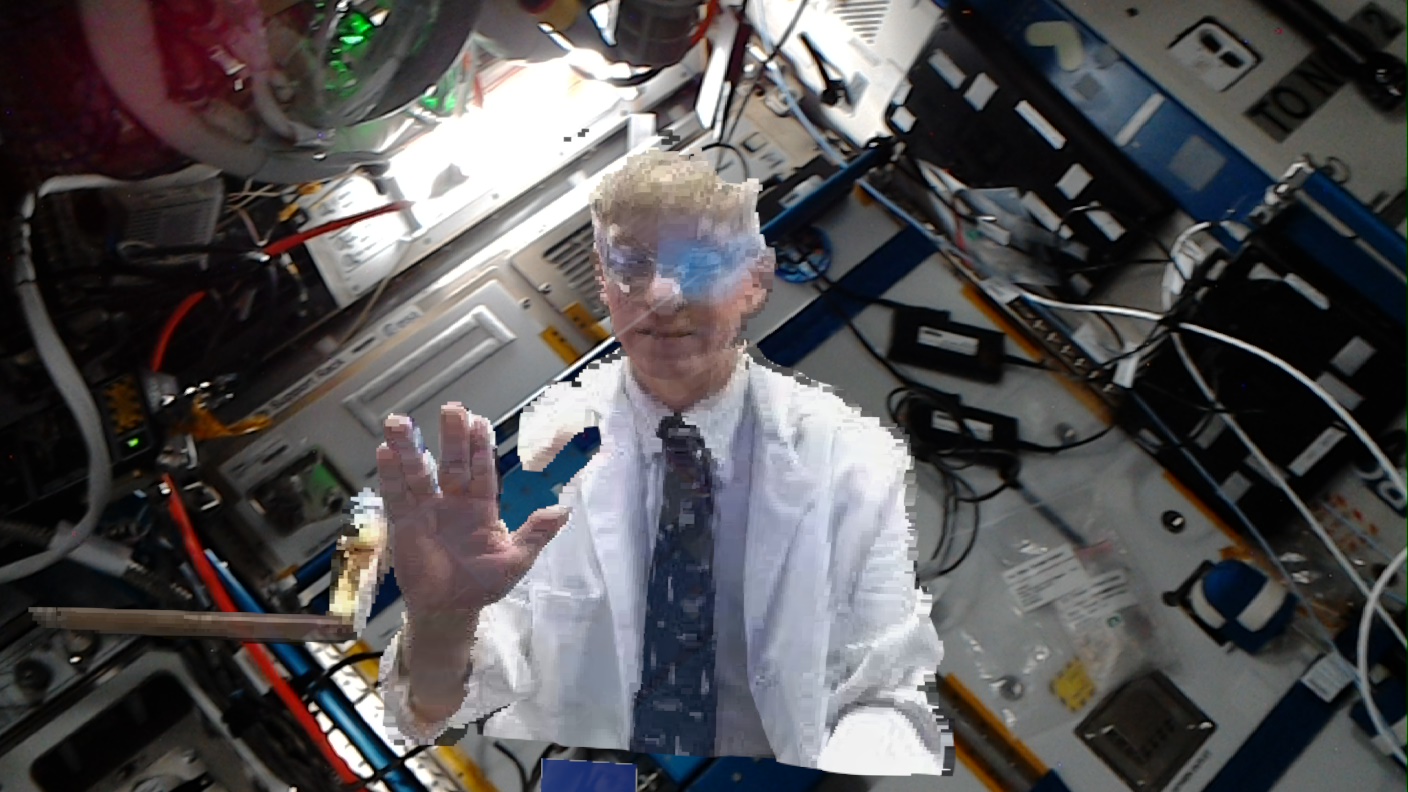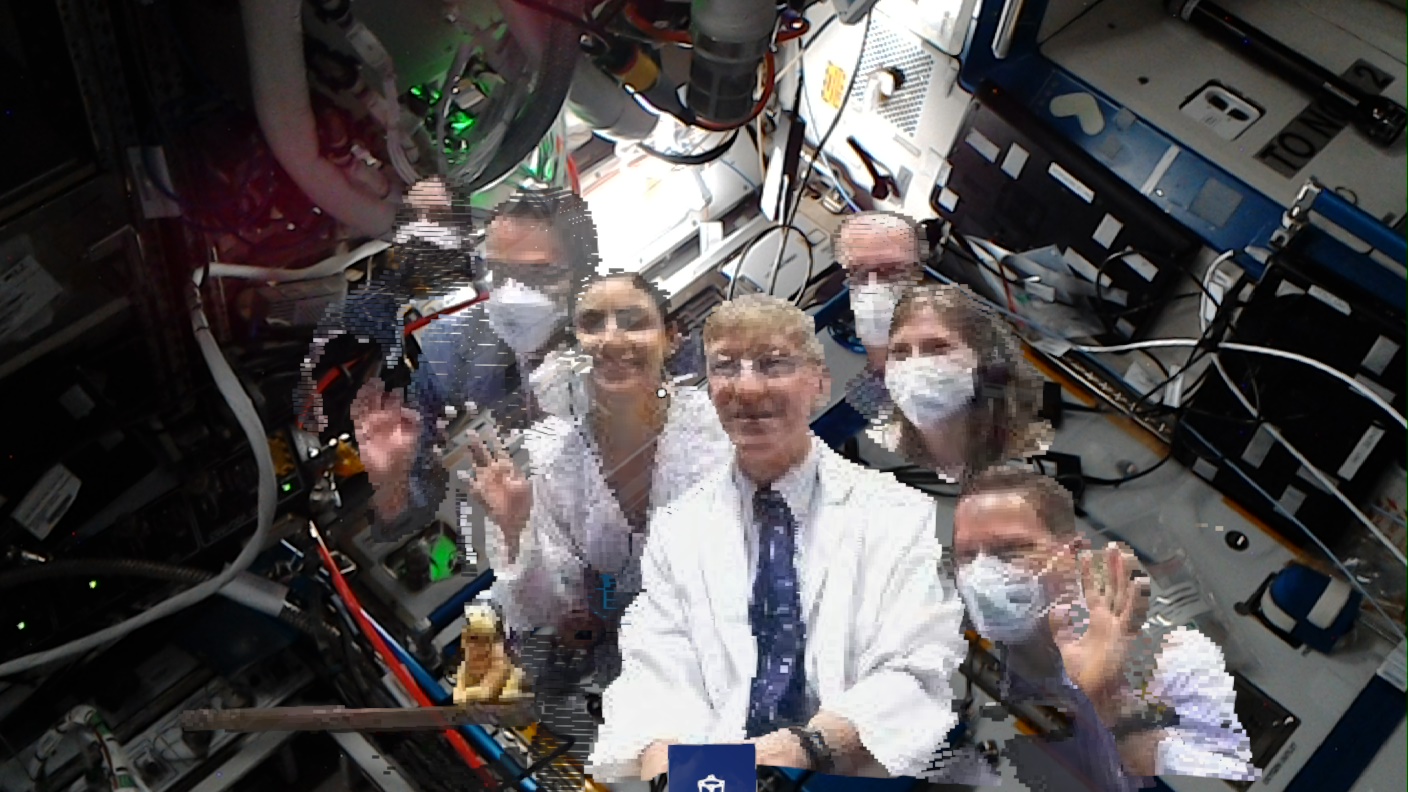A military surgeon, Dr. Josef Schmidt, was brought to the International Space Station. At the same time, the journey to the ISS did not require any rockets and was instantaneous. All thanks to a stunning futuristic experiment with “holoportation” – a mixture of “hologram” and “teleportation”. Visually, it looks like scientists managed to bring to life fantastic technologies from the films “Star Wars” or “Star Trek”.

“This is a completely new way of traveling for humans, in which our body can move beyond the planet instantly. Physically, our body is not present on the ISS, but our human essence is transferred there,” Josef Schmidt commented on the experiment with the holoport.
On this interdimensional journey to the ISS, Schmidt was joined by Fernando De La Peña Llaca, CEO of AEXA Aerospace, an organization that helped develop holoportation equipment, and several other team members.

Despite the fact that it looks incredible, holoportation is actually not a new technology. It was invented and implemented by Microsoft a few years ago. The company’s main intention was to revolutionize sectors such as advertising, medicine and education, and since then Microsoft has been steadily developing this concept. The collaboration between NASA and Microsoft has taken holoportation to a new level. Such a “virtual transport” for the first time successfully delivered people in a completely new way outside the planet Earth.
How the technology works
Microsoft creates 3D models of people on Earth, converts them into digital form, compresses and transmits them to the ISS, where they are reconstructed in a space laboratory — and all this in real time. Next, the astronauts receive an image of holoporters through Microsoft’s HoloLens headset, which allows them to see and hear digital guests as if they were in the same physical space. Astronaut Thomas Pesquet freely communicated with Schmidt and De La Peña, despite the fact that they were separated by many thousands of kilometers. The trio even holographically shook hands.
In the future, the agency intends to expand its system by adding an augmented reality feature that will give holoporters the ability to really move around the space station as if they are literally there. Everything except physical touch, it is difficult to implement at this stage.
It should be noted that the communication session took place in October 2021, but NASA decided to tell the whole world about it only now.

